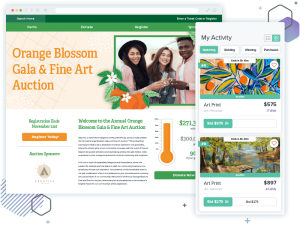Nonprofits all over the country are working towards finishing major year-end giving campaigns and setting up strategies for the new year. While it may seem a bit preemptive to think about social media now, it’s never too early to prepare yourself for for success. Luckily, we’ve got our 14 tips whittled down into manageable, easy-to-digest pieces so you can make the most of your year-end social media planning.
1. Stop Linking Your X and Facebook Accounts
Facebook is the Goliath of social media, but that doesn’t mean everyone has an account. If you’re linking your accounts, your Facebook posts will show up in your X followers’ feeds (and vice versa). That sounds fine until you realize that most Facebook posts are over 140 character limit for tweets. That means that X followers will only see a snippet of your update and a link to the full post. If they don’t have an account, though, clicking that link does them no good. On Facebook, followers will see hashtags, short links, and mentions that may not work on the site. That’s a great way to frustrate your fans and lose followers.
Linking the two accounts can also kill engagement when you upload pictures to Facebook. When you upload a Facebook picture, X automatically posts a status that says “I uploaded a picture to Facebook” followed by a link. No one wants to see dozens of identical updates when you’re updating your photo albums!
2. You Don’t Have to Post Every Day
If you’re stressing yourself out by worrying about having a daily post, you can stop! Quality, not quantity, is what really matters in the social media world. Adding good content should be a priority over posting sub-par updates every day. Take a look at your reach on Facebook and your engagement on X; you might find that many of your fans don’t even see your posts on certain days or times. If your reach and engagement are consistently low on, say, Tuesdays, don’t worry about not posting on Tuesday. Instead, focus on making a really dynamite post on Wednesday.
3. “Likes” Aren’t As Important As You Might Think
It’s always nice to gets likes, shares, or retweets when you make a post. It’s validating, and seeing that little red notification icon pop up is fun. But don’t beat yourself up if you’re not getting the number of likes you expected! A more telling statistic is the engagement you’re getting; how many people are clicking through and reading what you’re posting? How many people are interacting with you outside of social media because of a post they saw? Those are the numbers that really matter! And that being said…
4. Track the Number of Clicks on Your Links
You might have fantastic reach, but how many people are actually clicking the links you post? Good reach doesn’t always mean that you’re getting your message out there. Luckily, it’s easy to track the number of clicks you get on the links you post. For Facebook posts, you can see your click-through rate in your insights; just click on “Insights” and navigate to the “Posts” area. You’ll see each post you’ve made on your account, as well as the number of people who clicked on it. You can also use services like Google’s URL shortener (goo.gl), Hootsuite, or any number of other social media tools that keep track of your clicks. Having access to that information will help you figure out what type of posts your readers want, when to post them, and how to present them.
5. You Don’t Have to Use Every Social Media Platform
Social media can be overwhelming. Each platform has its own style, its own unique audience, and its own unique format. It’s a lot to keep track of, especially if you have a small social media team. Don’t ever-extend yourself trying to keep up with every single social media platform available. If Google+ isn’t something that you think is a good fit, don’t fret about it. Don’t have the energy to network on LinkedIn? Focus your time elsewhere. Not a visually-driven organization? Pinterest probably isn’t something you need to worry about. Whatever you do, make sure you have the time and energy to manage one or two platforms well. You can move on from there if you think it’s necessary.
6. Avoid Automating Your Social Media
Social media is, perhaps, the most powerful way to remind people that your nonprofit is run by compassionate human beings who want to make a difference in the world. Don’t compromise that by letting robots run your channels! Automated DMs (direct messages on X), bots that immediately “like” or “favorite” a post that mentions your name, and using bots to manage your posts might sound like a good idea, but it’s easy for them to come off as cold or impersonal. Users should even be careful with scheduled posts; if a pre-prepared post hits your channels at an inopportune time, it could make your organization look bad. Very, very bad. If you do automate your posts, make sure you keep a close eye on them, and don’t use it as a substitute for real social interaction.
7. Don’t Retweet Everyone Who Mentions You
You’ve worked hard to build your engagement on X, and you’re finally starting to get mentions from your followers. That’s wonderful! But be careful about how many times you retweet people who mention your organization. Doing so occasionally is fine (and encouraged!), but if you’re getting a lot of mentions, be selective about what you choose to post. Your X followers want to hear from you. They don’t want to see scores of retweets from people they don’t know. Retweet, but do so sparingly!
That’s a lot of information for one post! Keep an eye out for 7 more tips next week.
And for tips on asking for donations on Facebook, check out this article!


